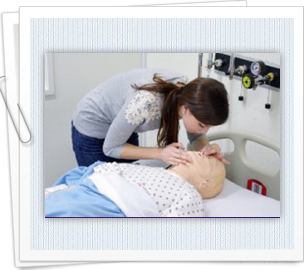Online CPR Certification Blog
CPR for poor or black neighborhoods
Date: September 26th, 2013
 Victims who are unfortunate enough to suffer from a cardiac arrest in a poor neighborhood or predominately black setting aren’t likely to receive CPR. This is contrary to people who suffer the same fate in areas with rich people or whites who are more likely to offer some assistance in the form of CPR.
Victims who are unfortunate enough to suffer from a cardiac arrest in a poor neighborhood or predominately black setting aren’t likely to receive CPR. This is contrary to people who suffer the same fate in areas with rich people or whites who are more likely to offer some assistance in the form of CPR.
Cardiac arrest victims in different settings
It should be noted that the possibility of victims receiving CPR in poor neighborhoods filled with white people was also very low. The study also examined the connection between racial composition and median income earners with the reaction of onlookers administering CPR. It should be noted that CPR performance by witnesses was as equally impressive to that of rich whites in areas where wealthy blacks were predominant.
Dr. Sasson Comilla, co-writer of the study, states that an ideal location is important for cardiac arrest victims just as it is for common realtor’s clients. She is a well acknowledged doctor and is an assistant professor at the University of Colorado School of medicine. She is based at the department of emergency medicine. She further reiterated that through her 10 years of practice in emergency rooms, she witnessed victims in lower income and black neighborhoods lack CPR assistance. She added survival sometimes relied on the area where one suffered the attack.
In depth look at CPR responses in various settings
According to the study, there are over 3000 occurrences of field cardiac attacks in the US annually. The outcome of survival differs marginally by regions. The disparity in survival rates can be attributed to different CPR performance from witnesses or onlookers.
The investigators examined the monitoring and evaluation data issued from 29 United States sites. This was spread over a span of 4 years to CARES (Cardiac Arrest Registry to Enhance Survival) registry. Approximately 4000 out of a recorded 14, 225 received CPR from bystanders. 8% of them went on to survive and be released by the hospital they were admitted into.
The range of value income used to determine difference between the low and high income laid between income thresholds of $40,000 minimum for high earners. Racial composition was on the other hand determined by an 80% predominance of a particular race. Neighborhoods which didn’t meet these conditions were termed as integrated.
Dr. Tomaselli Gordon said that there is some worry of getting cardiac arrests in racial, poor and underserved settings. The doctor is a based at John Hopkins University and is the chief of its cardiology division. She was also the president of AHA. She added that this is a very significant study considering the fact that it was presented in good manner.
Tomaselli and Sasson both concurred that cultural and financial factors could help shed some light on the difference in CPR performance found between bystanders CPR in the study. Gaining CPR skills or knowledge can be very expensive thus making it out of reach to people with low incomes. On the other hand, bystander might be more cautious in certain neighborhoods thus avoiding any contact with victims.
In some areas, bystanders were not always sure if victim had suffered from a cardiac arrest or was just simply lying on the ground due to pretence or overdrinking. The new hand-only approach is out to curb such trends wince it’s easy to administer and learn.